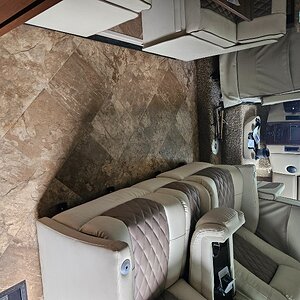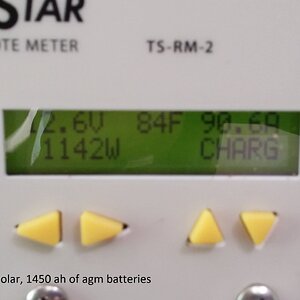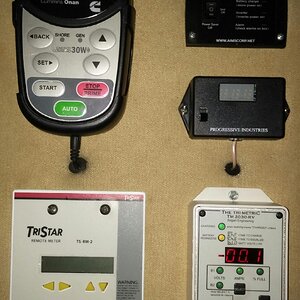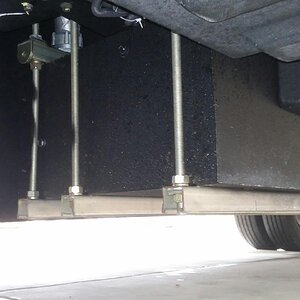Navigation
Install the app
How to install the app on iOS
Follow along with the video below to see how to install our site as a web app on your home screen.
Note: This feature may not be available in some browsers.
More options
Style variation
Welcome to RVForums.com
- Register now and join the discussion
- Friendliest RV Community on the web
- Modern site for PC's, Phones, Tablets - no 3rd party apps required
- Ask questions, help others, review campgrounds
- Get the most out of the RV Lifestyle
- Invite everyone to RVForums.com and let's have fun
- Commercial/Vendors welcome
You are using an out of date browser. It may not display this or other websites correctly.
You should upgrade or use an alternative browser.
You should upgrade or use an alternative browser.
Trying to pick the right internet solution and peplink hardware.
- Thread starter marc2912
- Start date
This isn't completely accurate. As someone who lives in a rural area, I've known all along that I would never benefit from MM band 5G, but have been waiting for years for low and mid band, as it's faster and longer range (range is frequency dependent, but also based on things like s/n ratio, etc., which leads to how fast your speeds are at a given signal strength).Now for the 5G part of the discussion. Our phones showing 5G is marketing BS, we're not on the real 5G we were all lead to believe it would be. It's the same as LTE, however, most carriers are upgrading their towers with newer and much smaller 5G antennas and with those comes more bands as I understand it. By having a 5G compatible radio I may not see improved speeds but I may see improved connectivity by being able to connect to bands others aren't on or more modern bands that will give me more stable connectivity.
It's like the old analog cell phones vs. digital. I didn't want to switch, I liked my flip phone way back in the day. But new tech came out and you had to be compatible with what the cell companies were using. As Internet is very important to my mobile office lifestyle, aka RVing, I want to do my best to have the best performing setup I can have and not spend hours fiddling with antennas, band selections, tongue out vs in to all get the best Internet setup so I can actually get down to business and do my work.
My $.02.
Saying 5G is no different than LTE, is akin to saying LTE is no faster than 3G. The leap from 3G to LTE was larger than from LTE to 5G, but still low and mid band 5G has many big advantages.
First and simplest, it opens up more spectrum wherever you happen to be. If you are limited to LTE and on a saturated tower, then having a 5G radio might benefit you simply because you can connect to an additional band or bands that you couldn't with only LTE.
Second, it's faster. I've both read about, and done my own testing, on Verizon and ATT, and generally speaking, if I connect to 5G and do a speed test, it's 25-100% faster than connecting to LTE with the same device at the same time. It's not always. There have been times both were the same, but generally, the 5G is faster, and based on what I've read online, this is the general consensus for those that have done side by side comparisons at the same location at the same time.
Third, and finally, C band or mid-band 5G can be significantly faster than LTE.
For RV'rs, we are mostly going to be utilizing low and mid band, and both of them give us significant advantages over just LTE.
On the one hand, I would say that 5G is not simply LTE with a new marketing name, but on the other hand, even with LTE, we saw changes in performance as the category of radio increases, so from that sense, I get the point that might be made about LTE/5G, in that one could argue the gains are similar to what you get moving from a CAT 4 to CAT 12 to CAT 20, etc. radio. As the level of MIMO and other changes improved with the radio categories, so did the performance, so when talking about low band only, you could argue that the increase is like increasing the category of radio, but when talking mid band, we are getting significantly greater speeds, but at shorter distances (always the case with LTE or 5G, the higher the frequency, the shorter the distance).
The good news is even if you don't get a 5G radio, you benefit from 5G, because as towers have been upgraded to have 5G, that's added carriers (bands) to the towers, and in many cases over crowded bands are now more lightly used, as users have switched the 5G bands when getting newer phones and other devices.
Joe Dutchstar
RVF Supporter
- Joined
- Nov 3, 2019
- Messages
- 3,643
- Location
- Florida
- RV Year
- 2024
- RV Make
- Newmar
- RV Model
- Dutch Star 4311
- RV Length
- 43
- Chassis
- Spartan
- Engine
- Cummins
- TOW/TOAD
- 2018 Ford Flex
- Fulltimer
- No
WaltonRVLife
RVF Newbee
- Joined
- May 24, 2024
- Messages
- 2
A unit i'd recommend is Homefi's router or personal hotspot, as they have been great options for me on the road. They connect to the nearest fastest network provider and have helped me keep connected on the road. I was deterred by Starlinks price and I'm glad I went with Homefi instead, and they have been great for me!Howdy y'all.
Since many of you have already done the research into this topic many times over I'm hoping to pick your brains.
I have, for a multitude of reasons, a need for decent, stable internet when traveling. Not so much when on the road but when stopped at different campground.
I have a starlink and my current setup is Starlink -> Amplify HD Mesh Router. I don't like nor want to use the Starlink router so the wifi is off and I hardwire their router to the Amplify.
I'd like to add 5g to this and was considering going this route:
View attachment 17144
The BR1 Pro 5G would connect to VZ network and I would use the WAN port to bring in service from Starlink. I would then out with LAN1 to the Amplify Router that would manage my internal network. My understanding is that this leaves me the usage of the BR1 Pro 5G's Wi-Fi WAN which I could use to add (when available) wifi as an additional source.
Would you recommend another unit besides the BR1 Pro 5G, if so which and why?
Thanks for any advice.
Similar threads
- Replies
- 1
- Views
- 669
- Replies
- 1
- Views
- 674
- Replies
- 1
- Views
- 550
- Featured
- Replies
- 9
- Views
- 463
- Replies
- 9
- Views
- 591
Latest resources
-
-
Trueline Leveling System (Valid Air)Operation & Service Manuals for the Valid Air leveling system
- Jim
- Updated:
-
-
Notes on the Electrical Systems of the Roadtrek Zion Family of RVsNotes on the Electrical Systems of the Roadtrek Zion Family of RVs
- dilbertjth
- Updated:
-












